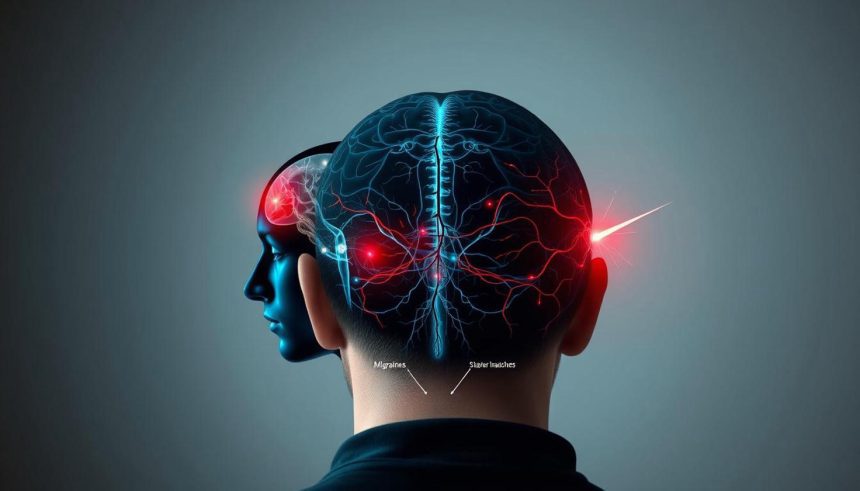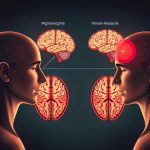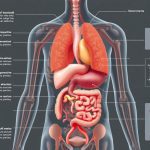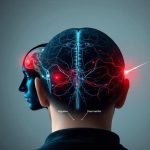Migraine vs Cluster Headache We’ll assist you in getting familiar with the symptoms, causes, and treatments of the headaches. Doing so will enable you to better manage your headaches.
Migraine vs Cluster Headache
Migraine or Cluster Headache? How to Know the Difference
Are bad headaches taking over your life, and do you ever wonder if it’s a migraine or a cluster headache? It’s difficult to distinguish between the two, but recognizing the difference is the best way to get well.
Most individuals receive the wrong diagnosis or fail to receive proper treatment due to these headaches appearing identical. The differences should be known to better manage your symptoms and live a healthier life.
We’ll assist you in getting familiar with the symptoms, causes, and treatments of the headaches. Doing so will enable you to better manage your headaches.
Read More: What Foods Speed Up Female Metabolism

Key Takeaways
The differences between cluster and migraine headaches are essential to know for proper diagnosis.
Symptoms and etiology of these headache disorders can differ extensively.
Proper therapy relies on proper identification of the type of headache.
The differences can contribute to improved symptom management.
Enhanced quality of life can be attained with proper diagnosis and therapy.
Understanding Headache Disorders
Headache disorders affect millions of people worldwide, affecting their lives and occupation. They involve conditions such as migraines and cluster headaches, each with specific effects. They transform the way people live and work.
The Effect of Sustained Headaches on Day-to-Day Life
Severe headaches such as migraines and cluster headaches can truly devastate day-to-day life. They create disabling pain, resulting in lost workdays and social withdrawal. The pain not only impacts the individual but also their family and caregivers.
- Area of Life
- Effect of Severe Headaches
- Work/Productivity
- Lost workdays, decreased effectiveness
- Social Life
- Social withdrawal, lost activities
- Family/Caregivers
- Increased burden, lifestyle changes
Why Accurate Diagnosis Is Important
Accurate diagnosis of headache disorders is essential. Inaccurate diagnoses can result in inappropriate treatments that worsen the situation. Accurate diagnosis allows physicians to administer proper treatment, which restores patients to health.
Education about headache disorders makes us appreciate why precise diagnosis is essential. It’s the initial process of doing headaches right and enhancing life.
Migraine vs Cluster Headache: Key Differences
It’s crucial to differentiate migraines from cluster headaches in order to provide the appropriate treatment. Both are serious but in different ways affect individuals. Differentiation is essential to help manage their symptoms in a better way.
Read More: Food For hair Growth And Thickness
Pain Characteristics and Location
The characteristics of pain and location can be utilized in differentiating migraines from cluster headaches. This information is most essential for an accurate diagnosis.
Migraine Pain Profile
Pain during a migraine is pulsating or throbbing and typically occurs on one side of the head. It may shift or occur on both sides. Migraineurs usually experience too much light, sound, or odors.
Cluster Headache Pain Profile
Pain from a cluster headache is very intense and is centered on one eye. It is a sharp or burning pain, primarily on one side.
Duration and Frequency Patterns
The duration and frequency with which migraines and cluster headaches occur are large hints for physicians.
Migraines last between 4 and 72 hours without medication. They occur with varying frequency. Cluster headaches, however, are shorter, lasting between 15 minutes and 3 hours. They tend to occur in clusters, with several attacks during the day.
- Characteristics
- Migraine
- Cluster Headache
- Duration
- 4 to 72 hours
- 15 minutes to 3 hours
- Frequency
- Varies, episodic
- Multiple times a day, in clusters
- Pain Location
- Usually one side, may shift
- Normally near one eye
Associated Symptoms
Both cluster headaches and migraines present symptoms that aid physicians in diagnosing them. Migraines are usually accompanied by nausea, vomiting, and photophobia and phonophobia. Cluster headaches produce restlessness, agitation, and pain like tearing or runny nose on the involved side.
Read More: High-protein weight loss
Migraine Headaches: Comprehensive Profile
Migraine headache is a prevalent neurological disorder. It produces severe pain and other manifestations. Understanding migraines is the essential step in their diagnosis and treatment.
Types of Migraines
Migraines are categorized into several types depending upon their symptoms. The chief types are:
Migraine With Aura
This migraine begins with aura. The aura may consist of visual or sensory alterations. It lasts for 5-60 minutes.
Migraine Without Aura
This is the most frequent migraine. It consists of headache pain without an aura. Pain is most often on one side and can be extremely bad.
Other Migraine Variants
There are less frequent types of migraines. These are vestibular migraine, which involves balance, and chronic migraine, which occurs more frequently.
Typical Migraine Symptoms
Migraine symptoms vary but often include severe headache pain. People may also feel sensitive to light and sound. Nausea and vomiting can also occur. Some may feel symptoms before the headache starts.
Migraine Phases and Progression
A migraine attack has a number of stages. These include prodrome, aura, headache, and postdrome. It is through the understanding of these stages that one is able to deal with migraines. The prodrome stage occurs prior to the headache. Mood change and cravings are included. The postdrome stage occurs after the headache. It leaves the individual drained or euphoric.
Cluster Headaches: Detailed Profile
Cluster headaches are extremely painful, even referred to as “suicide headaches.” They produce severe pain and occur in cycles. Understanding cluster headaches is essential to controlling them effectively.
The “Suicide Headache” Defined
The name “suicide headache” indicates how excruciating cluster headaches are. The headache is typically on the side of the head, in the area of the eye. The pain may be so severe that it is necessary to get a doctor.
- Common Cluster Headache Symptoms
- Cluster headaches have more than simply pain symptoms. They consist of:
- One-sided head pain, usually around the eye
- Restlessness and agitation
- Autonomic features such as lacrimation, rhinorrhea, and sweating
- Nausea and vomiting, though less frequent
Autonomic Features
Autonomic features form a crucial element of cluster headaches. They occur due to the autonomic nervous system. They involve lacrimation, rhinorrhea, and sweating on the painful side of the face.
Behavioral Responses
Individuals with cluster headaches tend to pace back and forth. This is unlike migraines, where individuals tend to remain stationary. The way an individual behaves during a headache will assist physicians in determining what it is.
Cluster Periods and Remission
Cluster headaches occur in cycles, with many attacks followed by periods of rest. During a cluster period, individuals may have headaches daily. Having an understanding of these patterns is helpful in treating cluster headaches.
- Characteristics
- Cluster Headaches
- Pain Site
- Unilateral, near the eye
- Time
- 15 minutes to 3 hours
- How often
One or more per day during cluster periods
Effective cluster headache care is knowing these cycles. It’s also knowing how to treat symptoms during cluster periods. Knowing the migraine and cluster headache symptoms allows physicians to provide improved care.
Causes and Triggers Comparison
It is crucial to understand what triggers and causes migraines and cluster headaches. They are both extreme headache disorders, but they differ in their reasons.
Experiments indicate that prevention of these triggers will help reduce both migraines and cluster headaches.
Migraine Triggers
Everyone’s triggers for migraines are different. Some common ones are foods, stress, and hormonal changes. Some can trigger migraines through food additives or withdrawal from caffeine. Recording in a headache journal can identify your migraine triggers.
- Food (e.g., aged cheeses, chocolate)
- Stress and emotional changes
- Hormonal changes
- Sensory stimuli (e.g., bright lights, loud noises)
Read More: Healthy Protein Diet For Weight Loss

Cluster Headache Triggers
Cluster headache causes are less understood. However, alcohol drinking and nitroglycerin are established to cause them. Others may develop cluster headaches due to altered sleep or pungent odors.
- Alcohol drinking
- Nitroglycerin and other vasodilators
- Pungent odors or fumes
- Altered sleep patterns
Genetic and Environmental Factors
Migraines and cluster headaches both have environmental and genetic components. If there’s a history of them in your family, you may also develop them. Your lifestyle and exposure to triggers are also important.
Having these factors in mind while comparing migraines and cluster headaches is helpful to make better prevention strategies and treatment plans.
How to Self-Assess Your Headache Type
By keeping track of your symptoms, you can assist your doctor in diagnosing and caring for you. It is crucial to monitor your symptoms to provide your doctor with the correct information. In this way, you may receive the ideal treatment for your headaches.
Being prepared while suffering from a headache is a must. Ask yourself questions to gather information for your doctor in the future.
Questions to Ask Yourself During an Attack
When you get a headache, consider where you feel the pain. Is it on one or both sides? Describe it as throbbing, piercing, or dull. Also, observe whether you get nauseous, light sensitive, or tearful.These responses may help you identify patterns in your headaches
- Location and quality of pain
- Associated symptoms
- Triggers or factors that aggravate the headache
Setting up a Headache Journal
Keeping a headache journal is a great way to track your symptoms. Write down the date, time, and details of each headache. Include how severe it was, how long it lasted, and what might have caused it.
As “A headache journal can be a simple notebook or a complex digital tool,” the most crucial thing is keeping it regularly. This way, you will be able to identify patterns that may not be immediately apparent.
Digital Tools for Symptom Tracking
There are also computer programs to monitor your symptoms. There are mobile apps and online sites with templates so you can log your headaches. This makes it simpler to observe patterns over time.
These applications tend to include additional features such as reminders and analysis. They allow you to share your information with your physician. As “technology continues to evolve,” there will be even more options to monitor your symptoms.
By questioning, maintaining a journal, and working with digital resources, you can learn a great deal about your headaches. This self-diagnosis not only aids in obtaining a diagnosis but also in better managing your headaches.
Diagnostic Process and Tests
To diagnose headaches such as migraines and cluster headaches, a number of steps are taken. These involve examining your medical history, conducting a physical examination, and performing tests. This is a thorough process that assists physicians in identifying the correct treatment for you.
Medical History and Physical Examination
Discussing your medical history is central in diagnosing headaches. Physicians will inquire about how often your headaches occur, how long they last, and what they are like. They will also inquire about whether you have any other symptoms. A physical exam is conducted to identify signs that may account for your headaches or disqualify other conditions.
Read More: Exercise To Reduce Belly Fat
Imaging Studies and Their Role
In some instances, imaging scans such as MRI or CT scans may be recommended. Such tests aid in screening for conditions such as tumors or aneurysms that may induce headaches. Although they do not diagnose migraines or cluster headaches per se, they are crucial for excluding serious conditions.
Ruling Out Other Conditions
Part of figuring out what’s causing your headaches is to rule out other possible causes. This includes things like sinusitis, TMJ disorders, and other headache types. By carefully looking at your symptoms and test results, doctors can accurately diagnose and treat you.
- Important things doctors consider when diagnosing include:
- How often and how long your headaches last
- What your pain feels like (where, how, how bad)
- Any other symptoms that accompany your headaches (such as nausea or sensitivity to light)
- What makes your headaches occur and what makes them stop
- Treatment Approaches for Both Conditions
- Treating migraines and cluster headaches requires a solid understanding of the ways to treat them. They have acute treatments for when the symptoms strike and preventive measures to reduce future attacks.
Acute Treatments for Migraines
For migraines, over-the-counter pain medications such as ibuprofen and acetaminophen are typical. Triptans, among other prescription medications, are also prescribed. Triptans are effective in constricting blood vessels and in preventing pain messages from reaching the brain. Anti-nausea medications may be added to alleviate nausea.
Acute Treatments for Cluster Headaches
Treatment for cluster headaches usually begins with oxygen therapy. Pure oxygen is inhaled by the patients to rapidly relieve symptoms. Triptans, administered through an injection, are also effective. Corticosteroids can be used to suppress swelling.
Preventive Medication Options
Preventive medications are important for both cluster headaches and migraines. These drugs are taken daily to minimize frequency, severity, and duration of attacks.
Migraine Prevention
Preventive medications for migraines are beta-blockers, anticonvulsants, and some antidepressants. They stabilize blood vessels to decrease migraine attacks.
Prevention of Cluster Headaches
Prevention of cluster headaches in most cases is with verapamil, a calcium channel blocker. It prevents cluster periods. Corticosteroids are prescribed for short-term prevention in anticipated cluster periods.
Understanding these treatments allows patients and physicians to design a customized plan. This enhances the quality of life in spite of these challenging conditions.
When to Seek Medical Attention
Headache disorders may be quite challenging. It’s important to know when to visit a doctor. Some headaches are normal, but others may signify a serious condition that requires a doctor’s attention.
Read More: Fat Burning Foods For Belly Fat

Red Flag Symptoms
- Certain symptoms with headaches are “red flags” that indicate you should go to the doctor immediately. These are:
Sudden and severe headache: Typically termed as a “thunderclap headache.” - Headache with fever, confusion, or stiff neck: May be a sign of meningitis or encephalitis.
- Headache with neurological symptoms: Like weakness, change in vision, or trouble speaking.
- Recognizing these red flag symptoms can help you seek medical attention in a hurry. This may prevent dangerous issues.
- Symptom
- Potential Indication
- Sudden bad headache
- Aneurysm or stroke
- Headache and fever
- Infection like meningitis
- Finding the Right Specialist
- If you have recurring or bad headaches, visit a physician who understands them. Begin by asking your regular doctor for a referral to a:
- Neurologist
- Headache specialist
- Preparing for Your Doctor’s Appointment
- In order to get the most out of your visit to the doctor, be prepared with:
- A comprehensive headache diary
- A list of medications and supplements you are currently taking
- Concerns or questions you have regarding your headaches
- Being prepared will enable your doctor to better understand your situation. This can result in improved care for you.
- “The key to managing headache disorders is understanding your symptoms and seeking the right medical help when needed.”
— Dr. John Smith, Neurologist
Conclusion: Living Well Despite Headache Disorders
It is important to be able to distinguish migraine from cluster headache in order to deal with them effectively. By knowing the distinct characteristics of each condition, we can look for appropriate treatments.
Headache disorders are difficult to deal with, but it’s not impossible. Through proper diagnosis and treatment, we can live better. Dealing with these conditions involves changing our lifestyle and applying medical interventions.
By comparing migraines and cluster headaches, we are better able to understand each. That knowledge allows us to make intelligent decisions regarding our health. By taking control, we can reduce the everyday impact of these headaches.
We can manage our lives with headache disorders by being aware and seeking assistance. With effective treatment programs, we are able to combat the influence of migraines and cluster headaches. By going the right way, we are able to live a healthier life despite having these disorders.
Read More : Migraine vs Cluster Headache
FAQ
What are the most significant differences between migraines and cluster headaches?
Migraines and cluster headaches also involve different types of pain and sites. Migraines tend to be throbbing and on one side of the head. Cluster headaches are extremely painful and typically close to the eye.
How do I know if I have a migraine or a cluster headache?
Check your headache’s location, its level of pain, and its duration. Keeping a headache journal can help you chart and identify patterns in your symptoms.
What are the common symptoms of migraines and cluster headaches?
Migraines will make you sensitive to light and sound, and you may be nauseous or throw up. Cluster headaches make your face tear, turn red, and swell.
Can I prevent migraines and cluster headaches?
You can’t always prevent migraines and cluster headaches, but you can try. Steer clear of triggers, stay regular, and take preventive medication.
What are the treatments for migraine and cluster headache?
Pain medication and preventive medication such as beta blockers are included. Lifestyle modification and alternative medicine such as acupuncture can also be of assistance.
How can I best treat my headache disorder?
Collaborate with your physician in developing a treatment plan. Record your headaches and remain informed about new therapies.
When do I need to see a doctor for my headache disorder?
Consult a doctor if your headaches are severe or worsening. A neurologist can diagnose and treat.
Can I use digital tools to monitor my headache symptoms?
Yes, you can use apps that monitor your symptoms and report them to your doctor. This can result in better headache management.
What are the advantages of keeping a headache diary?
A headache diary assists in monitoring symptoms, identifying triggers, and observing the efficacy of treatments. It’s helpful for your physician and enables you to control your headaches.










